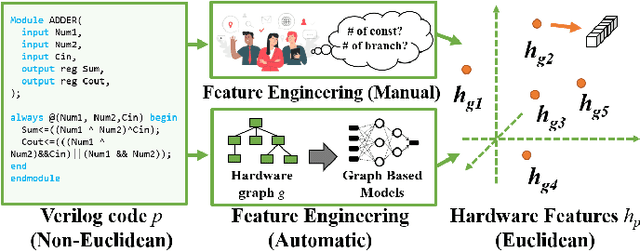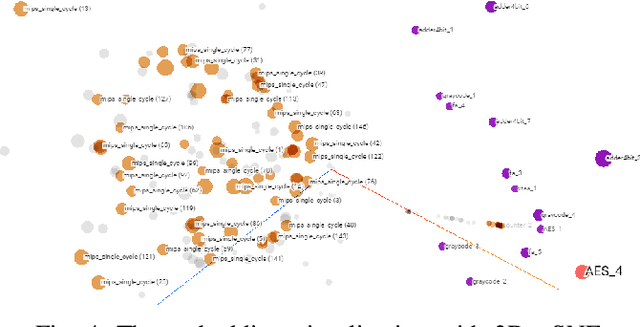Tommy Nguyen
AdvIRL: Reinforcement Learning-Based Adversarial Attacks on 3D NeRF Models
Dec 18, 2024Abstract:The increasing deployment of AI models in critical applications has exposed them to significant risks from adversarial attacks. While adversarial vulnerabilities in 2D vision models have been extensively studied, the threat landscape for 3D generative models, such as Neural Radiance Fields (NeRF), remains underexplored. This work introduces \textit{AdvIRL}, a novel framework for crafting adversarial NeRF models using Instant Neural Graphics Primitives (Instant-NGP) and Reinforcement Learning. Unlike prior methods, \textit{AdvIRL} generates adversarial noise that remains robust under diverse 3D transformations, including rotations and scaling, enabling effective black-box attacks in real-world scenarios. Our approach is validated across a wide range of scenes, from small objects (e.g., bananas) to large environments (e.g., lighthouses). Notably, targeted attacks achieved high-confidence misclassifications, such as labeling a banana as a slug and a truck as a cannon, demonstrating the practical risks posed by adversarial NeRFs. Beyond attacking, \textit{AdvIRL}-generated adversarial models can serve as adversarial training data to enhance the robustness of vision systems. The implementation of \textit{AdvIRL} is publicly available at \url{https://github.com/Tommy-Nguyen-cpu/AdvIRL/tree/MultiView-Clean}, ensuring reproducibility and facilitating future research.
Gaussian Splatting Under Attack: Investigating Adversarial Noise in 3D Objects
Dec 03, 2024Abstract:3D Gaussian Splatting has advanced radiance field reconstruction, enabling high-quality view synthesis and fast rendering in 3D modeling. While adversarial attacks on object detection models are well-studied for 2D images, their impact on 3D models remains underexplored. This work introduces the Masked Iterative Fast Gradient Sign Method (M-IFGSM), designed to generate adversarial noise targeting the CLIP vision-language model. M-IFGSM specifically alters the object of interest by focusing perturbations on masked regions, degrading the performance of CLIP's zero-shot object detection capability when applied to 3D models. Using eight objects from the Common Objects 3D (CO3D) dataset, we demonstrate that our method effectively reduces the accuracy and confidence of the model, with adversarial noise being nearly imperceptible to human observers. The top-1 accuracy in original model renders drops from 95.4\% to 12.5\% for train images and from 91.2\% to 35.4\% for test images, with confidence levels reflecting this shift from true classification to misclassification, underscoring the risks of adversarial attacks on 3D models in applications such as autonomous driving, robotics, and surveillance. The significance of this research lies in its potential to expose vulnerabilities in modern 3D vision models, including radiance fields, prompting the development of more robust defenses and security measures in critical real-world applications.
* Accepted to Safe Generative AI Workshop @ NeurIPS 2024: https://neurips.cc/virtual/2024/workshop/84705
One Noise to Rule Them All: Multi-View Adversarial Attacks with Universal Perturbation
Apr 02, 2024Abstract:This paper presents a novel universal perturbation method for generating robust multi-view adversarial examples in 3D object recognition. Unlike conventional attacks limited to single views, our approach operates on multiple 2D images, offering a practical and scalable solution for enhancing model scalability and robustness. This generalizable method bridges the gap between 2D perturbations and 3D-like attack capabilities, making it suitable for real-world applications. Existing adversarial attacks may become ineffective when images undergo transformations like changes in lighting, camera position, or natural deformations. We address this challenge by crafting a single universal noise perturbation applicable to various object views. Experiments on diverse rendered 3D objects demonstrate the effectiveness of our approach. The universal perturbation successfully identified a single adversarial noise for each given set of 3D object renders from multiple poses and viewpoints. Compared to single-view attacks, our universal attacks lower classification confidence across multiple viewing angles, especially at low noise levels. A sample implementation is made available at https://github.com/memoatwit/UniversalPerturbation.
* 6 pages, 4 figures, presented at ICAIA, Springer to publish under Algorithms for Intelligent Systems
HW2VEC: A Graph Learning Tool for Automating Hardware Security
Jul 26, 2021



Abstract:The time-to-market pressure and continuous growing complexity of hardware designs have promoted the globalization of the Integrated Circuit (IC) supply chain. However, such globalization also poses various security threats in each phase of the IC supply chain. Although the advancements of Machine Learning (ML) have pushed the frontier of hardware security, most conventional ML-based methods can only achieve the desired performance by manually finding a robust feature representation for circuits that are non-Euclidean data. As a result, modeling these circuits using graph learning to improve design flows has attracted research attention in the Electronic Design Automation (EDA) field. However, due to the lack of supporting tools, only a few existing works apply graph learning to resolve hardware security issues. To attract more attention, we propose HW2VEC, an open-source graph learning tool that lowers the threshold for newcomers to research hardware security applications with graphs. HW2VEC provides an automated pipeline for extracting a graph representation from a hardware design in various abstraction levels (register transfer level or gate-level netlist). Besides, HW2VEC users can automatically transform the non-Euclidean hardware designs into Euclidean graph embeddings for solving their problems. In this paper, we demonstrate that HW2VEC can achieve state-of-the-art performance on two hardware security-related tasks: Hardware Trojan Detection and Intellectual Property Piracy Detection. We provide the time profiling results for the graph extraction and the learning pipelines in HW2VEC.
 Add to Chrome
Add to Chrome Add to Firefox
Add to Firefox Add to Edge
Add to Edge